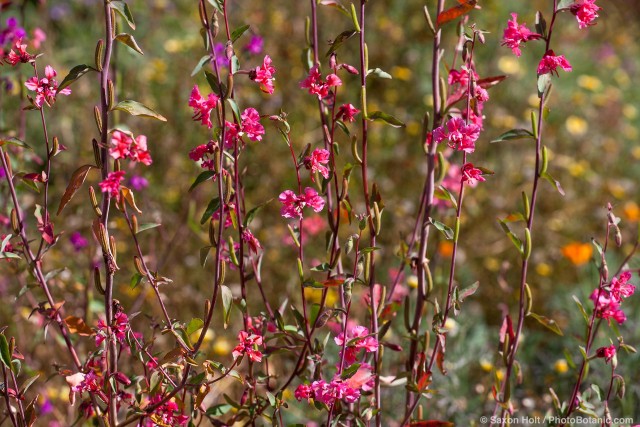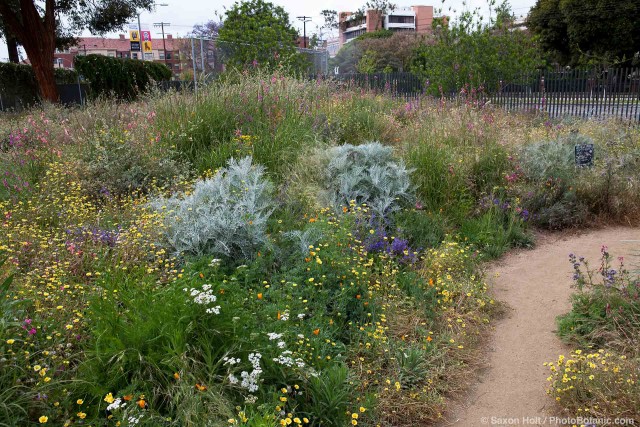 In the middle of one of the biggest cities in the world an ebullient pollinator garden is attracting insects and native bees to a museum science project. The Los Angeles Museum of Natural History has surrounded itself with a 3.5 acre urban habitat garden that is succeeding in attracting insects for study by the scientists within.
In the middle of one of the biggest cities in the world an ebullient pollinator garden is attracting insects and native bees to a museum science project. The Los Angeles Museum of Natural History has surrounded itself with a 3.5 acre urban habitat garden that is succeeding in attracting insects for study by the scientists within.
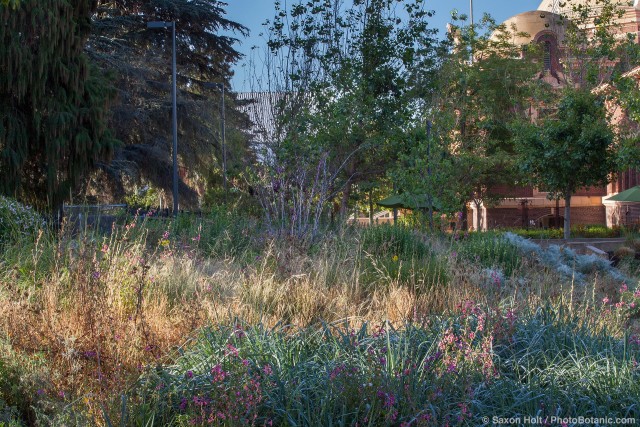 But perhaps even more importantly it provides gardens for city dwellers to learn about native plants and summer-dry gardening techniques in climate parched by drought. Demonstration gardens, the Erika J. Glazer Family Edible Garden, and a “get dirty” zone are all part of the Nature Gardens that include the pollinator garden designed by Carol Bornstein with Michelle Sullivan with landscape architect firm Mia Lehrer and Associates.
But perhaps even more importantly it provides gardens for city dwellers to learn about native plants and summer-dry gardening techniques in climate parched by drought. Demonstration gardens, the Erika J. Glazer Family Edible Garden, and a “get dirty” zone are all part of the Nature Gardens that include the pollinator garden designed by Carol Bornstein with Michelle Sullivan with landscape architect firm Mia Lehrer and Associates.
Says Dr. Karen Wise, the Museum’s VP of Education and Exhibits: “Trust me, after you’ve been in the Nature Gardens and Nature Lab, you’ll see L.A. nature through new eyes — from the window of an apartment to a schoolyard, from the beach to the mountains, from a city park to your own backyard. You’ll see more of the wildlife that is all around us. ”
The gardens include a riparian corridor and pond as water source which is essential to any habitat garden, but especially in the dry climate of Southern California.
Urban habitat gardens are critical to the health of all urban gardens. They are oases for birds and butterflies. They allow the earth to breath. And Los Angeles has hundreds of species of native bees, most of which nest in the ground, so the flowers in the pollinator garden are the important food source.
The flowers are planted right up to the fence line with the City, its streetcars, and buzz of traffic forgotten once the visitor is absorbed by the wildflowers.
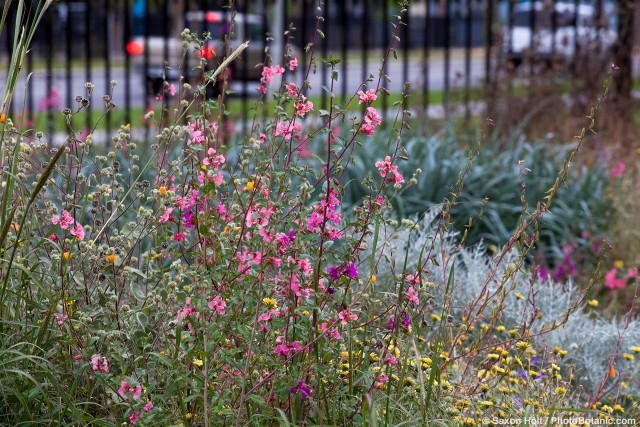
A photographer can turn his back to the city and pretend he is in a wildflower paradise. Here is the same Clarkia, just from another point of view.
California’s rich native flora has legendary displays of spring wildflowers. Here at the Natural History Museum, the pollinator garden showcases the classics such as these Tidy Tips and Poppies.
 No good pollinator garden is without grasses which knit together the habitat. Here is nodding Needle Grass, Stipa cernua, with the gray foliage of Island Snowflake – Eriophyllum nevinii.
No good pollinator garden is without grasses which knit together the habitat. Here is nodding Needle Grass, Stipa cernua, with the gray foliage of Island Snowflake – Eriophyllum nevinii.
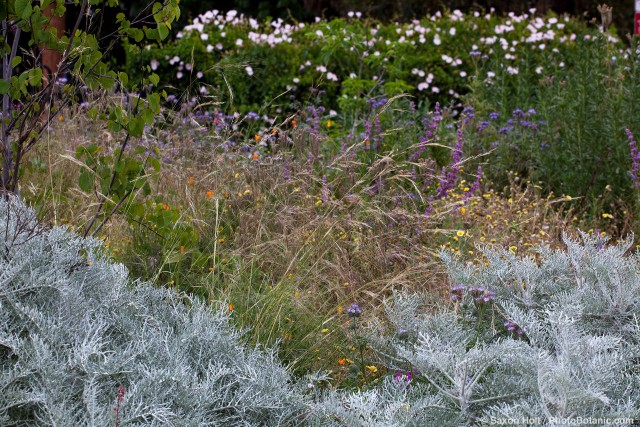 The grasses really help make this an urban meadow, a place to stroll as much as a place to study. The garden design was inspired by the scientists who wanted a living laboratory and local master gardeners who wanted a teaching garden.
The grasses really help make this an urban meadow, a place to stroll as much as a place to study. The garden design was inspired by the scientists who wanted a living laboratory and local master gardeners who wanted a teaching garden.
It succeeds on all levels.


